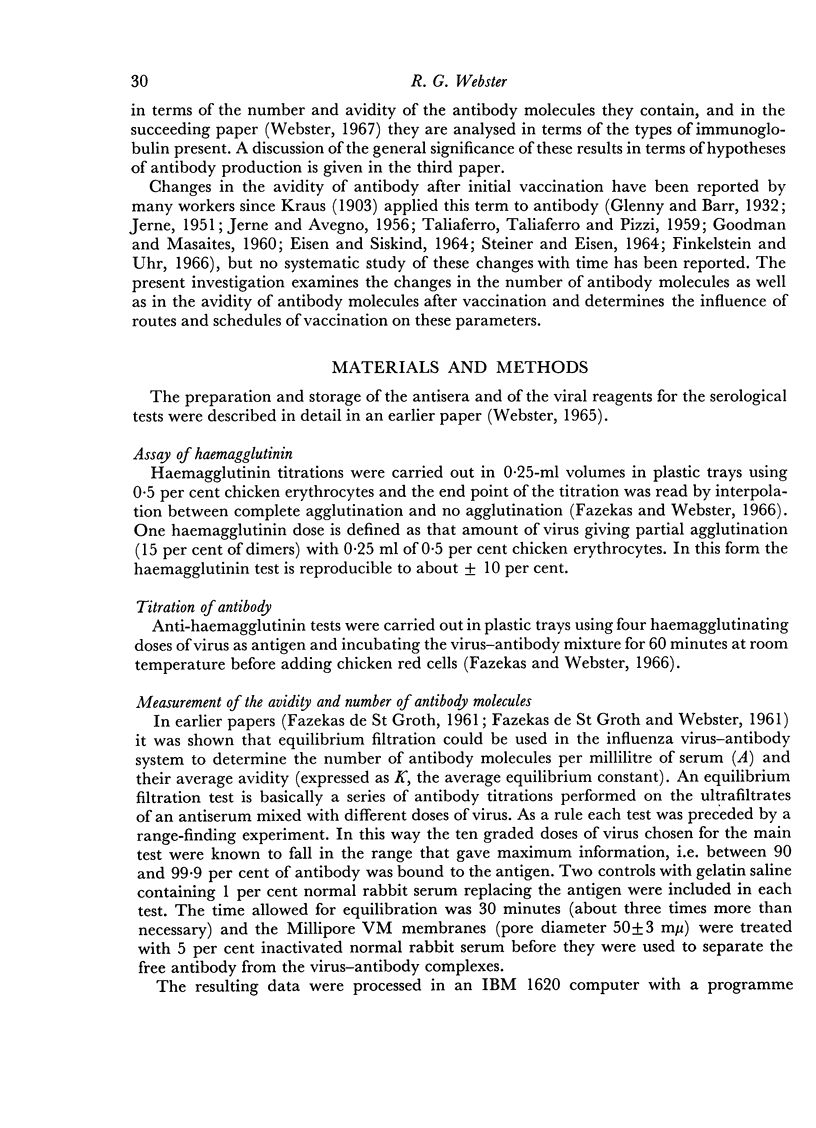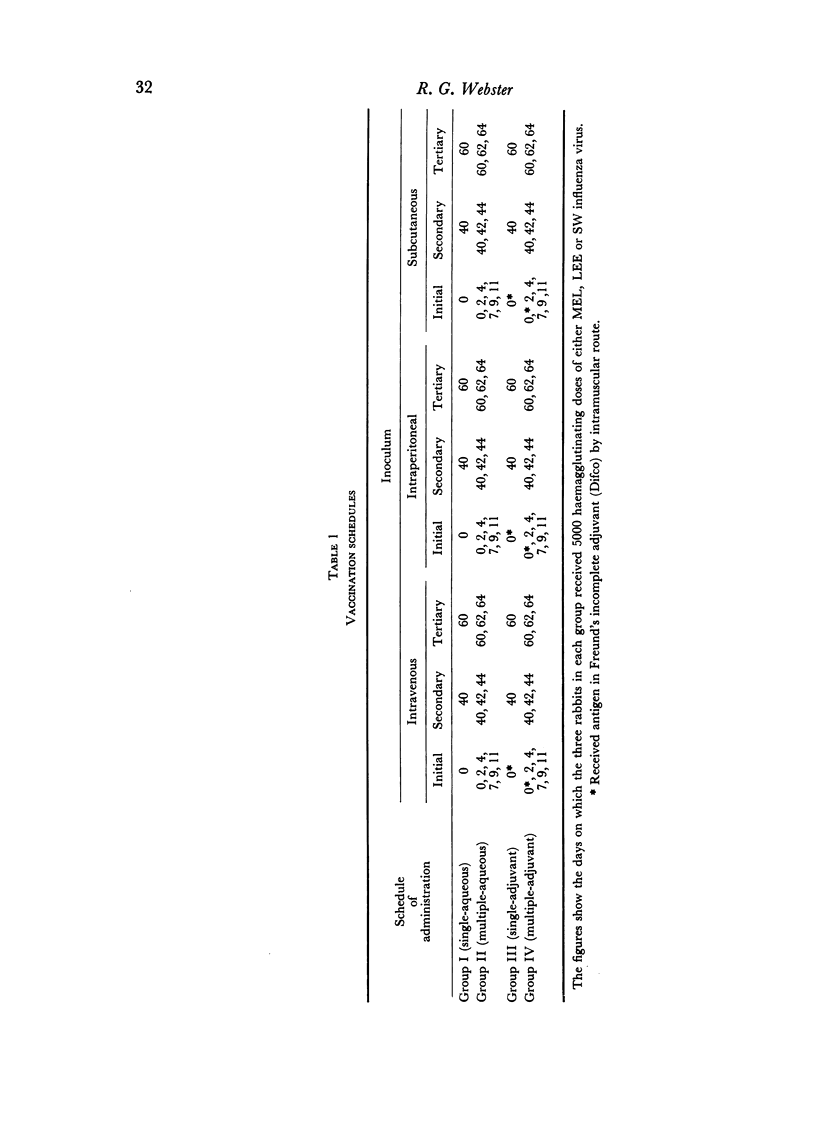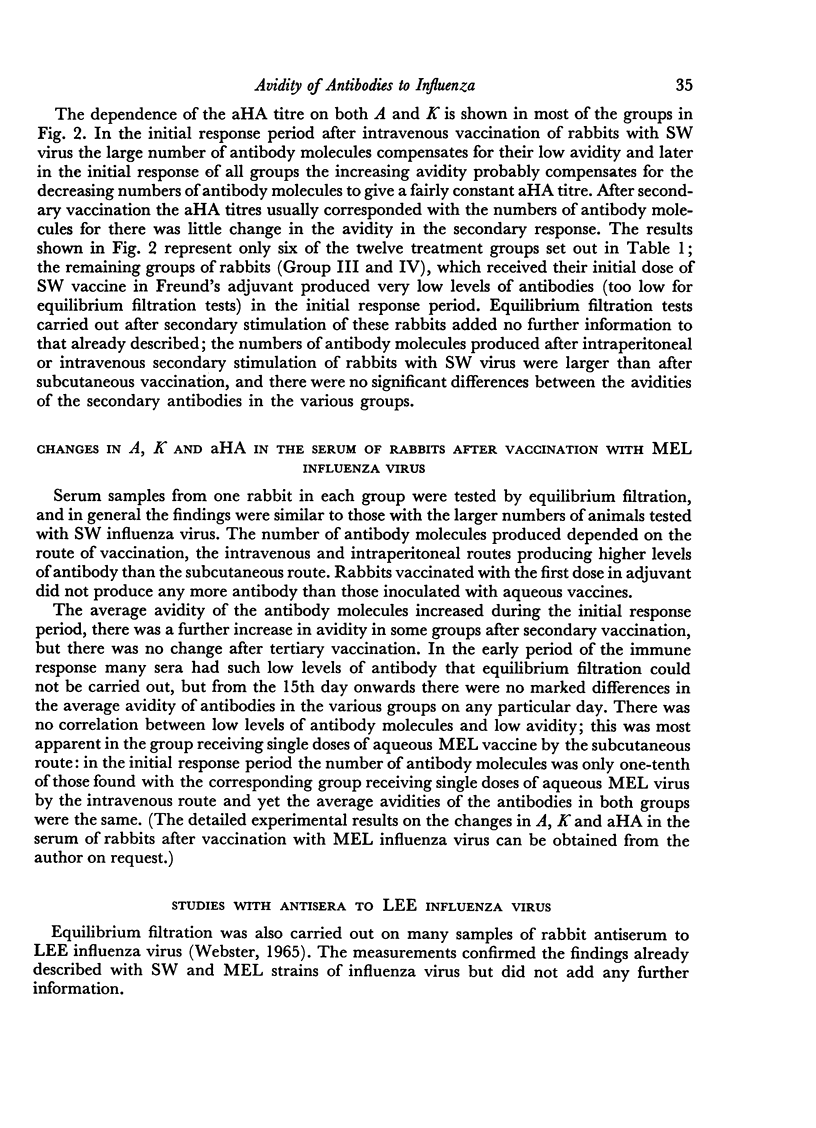Abstract
Anti-haemagglutinin titres and measurements of the changes in the number of antibody molecules per millilitre (A), and in their average avidities (K) were carried out by equilibrium filtration on antisera prepared in rabbits to SW, MEL and LEE influenza viruses. These studies showed:
(1) Immunization of rabbits with influenza virus by the intravenous route induced sufficient levels of antibodies by the 5th day after vaccination for testing by equilibrium filtration, immunization by the intraperitoneal or subcutaneous routes did not induce sufficient antibody levels for testing by the 5th day.
(2) The avidity of the antibodies present at 5 days after vaccination was higher than at 10 days after vaccination.
(3) The avidity of antibodies increased during the initial response period (from the low point at 10 days) and was independent of the routes or schedules of vaccination tested.
(4) Secondary vaccination did not cause a pronounced increase in the avidity of antibodies, although a few groups of rabbits showed some further increase; tertiary vaccination caused no further increase.
(5) The number of antibody molecules produced in rabbits after vaccination with influenza virus depended on the route and schedule of inoculation; the routes could be ordered intravenous, intraperitoneal and subcutaneous in decreasing order of efficiency; multiple doses increased the number of antibody molecules by all routes.
(6) Increases in the antihaemagglutinin levels after secondary stimulation were due mainly to increases in the number of antibody molecules.
Full text
PDF








Selected References
These references are in PubMed. This may not be the complete list of references from this article.
- EISEN H. N., SISKIND G. W. VARIATIONS IN AFFINITIES OF ANTIBODIES DURING THE IMMUNE RESPONSE. Biochemistry. 1964 Jul;3:996–1008. doi: 10.1021/bi00895a027. [DOI] [PubMed] [Google Scholar]
- Fazekas de St Groth, Webster R. G. Disquisitions of Original Antigenic Sin. I. Evidence in man. J Exp Med. 1966 Sep 1;124(3):331–345. doi: 10.1084/jem.124.3.331. [DOI] [PMC free article] [PubMed] [Google Scholar]
- Finkelstein M. S., Uhr J. W. Antibody formation. V. The avidity of gamma-M and gamma-G guinea pig antibodies to bacteriophage phi-x 174. J Immunol. 1966 Nov;97(5):565–576. [PubMed] [Google Scholar]
- GOODMAN H. S., MASAITIS L. The dissociation of hemolytic antibody from sensitized cells as measured by cell-to-cell transfer. J Immunol. 1960 Oct;85:391–397. [PubMed] [Google Scholar]
- JERNE N. K., AVEGNO P. The development of the phage-inactivating properties of serum during the course of specific immunization of an animal: reversible and irreversible inactivation. J Immunol. 1956 Mar;76(3):200–208. [PubMed] [Google Scholar]
- STEINER L. A., EISEN H. N. VARIATIONS IN THE IMMUNE RESPONSE TO A SIMPLE DETERMINANT. Trans Assoc Am Physicians. 1964;77:100–109. [PubMed] [Google Scholar]
- TALIAFERRO W. H., TALIAFERRO L. G., PIZZI A. K. Avidity and inter cellular transfer of hemolysin. J Infect Dis. 1959 Nov-Dec;105:197–221. doi: 10.1093/infdis/105.3.197. [DOI] [PubMed] [Google Scholar]
- Webster R. G. The immune response to influenza virus. 3. Changes in the avidity and specificity of early IgM and IgG antibodies. Immunology. 1968 Jan;14(1):39–52. [PMC free article] [PubMed] [Google Scholar]
- Webster R. G. The immune response to influenza virus. I. Effect of the route and schedule of vaccination on the time course of the immune response, as measured by three serological methods. Immunology. 1965 Dec;9(6):501–519. [PMC free article] [PubMed] [Google Scholar]


